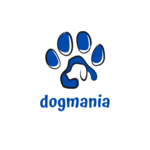Understanding Grain Sensitivities in Dogs: Is Grain-Free the Solution?
Grain sensitivities in dogs have become a hot topic among pet owners and veterinarians alike. As more dog foods proudly display "grain-free" labels, it’s essential to understand whether these diets are beneficial or even necessary for your canine companion. This article delves into the nature of grain sensitivities, the symptoms, and the debate surrounding grain-free diets to help you make an informed decision.
What Are Grain Sensitivities?
Grain sensitivities, also known as grain allergies or intolerances, occur when a dog’s immune system mistakenly identifies certain grain proteins as harmful. Common grains that may trigger sensitivities include wheat, corn, soy, and barley. While true grain allergies are relatively rare, grain intolerances can be more common and can cause discomfort and health issues for some dogs.
Symptoms of Grain Sensitivities
Identifying grain sensitivities can be challenging since the symptoms often overlap with other food allergies and health conditions. Common signs include:
1. Itchy Skin: Excessive scratching, licking, and biting can indicate an allergic reaction.
2. Digestive Issues: Diarrhea, vomiting, and gas may occur if grains irritate the digestive system.
3. Ear Infections: Recurrent ear infections can be a sign of an underlying allergy.
4. Chronic Paw Licking: Dogs often lick their paws to alleviate the itchiness caused by allergies.
5. Red, Inflamed Skin: Allergic reactions can lead to redness and inflammation, especially around the ears, paws, and face.
Diagnosing Grain Sensitivities
If you suspect your dog has a grain sensitivity, it’s crucial to consult with a veterinarian. A vet can conduct a thorough examination and recommend an elimination diet to pinpoint the exact cause of the symptoms. This process involves removing potential allergens from your dog’s diet and gradually reintroducing them to identify the trigger.
The Rise of Grain-Free Diets
Grain-free diets have surged in popularity, largely driven by concerns over grain sensitivities and the belief that dogs thrive on a diet similar to their wild ancestors. Grain-free dog foods typically replace grains with alternative carbohydrates like potatoes, peas, lentils, and sweet potatoes.
Benefits of Grain-Free Diets
1. Hypoallergenic Options: Grain-free diets can be a suitable alternative for dogs with confirmed grain sensitivities, reducing allergic reactions.
2. High-Quality Protein Sources: Many grain-free foods emphasize high-quality proteins, which can support muscle development and overall health.
3. Improved Digestion: For dogs with grain intolerances, grain-free diets can alleviate digestive issues and promote better nutrient absorption.
The Grain-Free Debate
DCM is a serious condition where the heart becomes enlarged and cannot pump blood efficiently. Symptoms include lethargy, coughing, difficulty breathing, and fainting. The exact cause of DCM related to grain-free diets is still under investigation, but it’s believed that certain ingredients might interfere with taurine absorption, an essential amino acid for heart health.
It’s essential to choose a dog food that provides balanced nutrition. Not all grain-free foods are created equal, and some may lack necessary nutrients. When selecting a grain-free diet, look for brands that adhere to the Association of American Feed Control Officials (AAFCO) standards and provide comprehensive nutritional information.
Alternatives to Grain-Free Diets
If your dog does not have a confirmed grain sensitivity, a grain-inclusive diet might still be suitable. Many high-quality grain-inclusive dog foods use whole grains like brown rice, oatmeal, and quinoa, which can be beneficial for your dog’s health.
For dogs with multiple allergies, limited ingredient diets (LID) can be an effective solution. These diets contain fewer ingredients, reducing the likelihood of allergic reactions. LID options are available in both grain-free and grain-inclusive formulas.
Making an Informed Decision
Deciding whether to feed your dog a grain-free diet requires careful consideration of your dog’s specific needs and health conditions. Here are some steps to help you make an informed choice:
1. Consult Your Veterinarian: Always seek professional advice before making significant dietary changes.
2. Monitor Your Dog’s Health: Pay attention to any changes in your dog’s behavior, skin, and digestion.
3. Read Labels Carefully: Ensure the dog food you choose meets AAFCO standards and provides balanced nutrition.
4. Consider Rotational Feeding: Introducing variety in your dog’s diet can prevent nutrient deficiencies and reduce the risk of developing allergies.
Conclusion
Understanding grain sensitivities in dogs and the potential benefits and risks of grain-free diets is crucial for ensuring your dog’s health and well-being. While grain-free diets can be beneficial for some dogs, they are not a one-size-fits-all solution. Always consult with your veterinarian and choose a diet that meets your dog’s nutritional needs, whether it includes grains or not. By staying informed and vigilant, you can provide the best possible care for your furry friend.



leave me your thoughts here